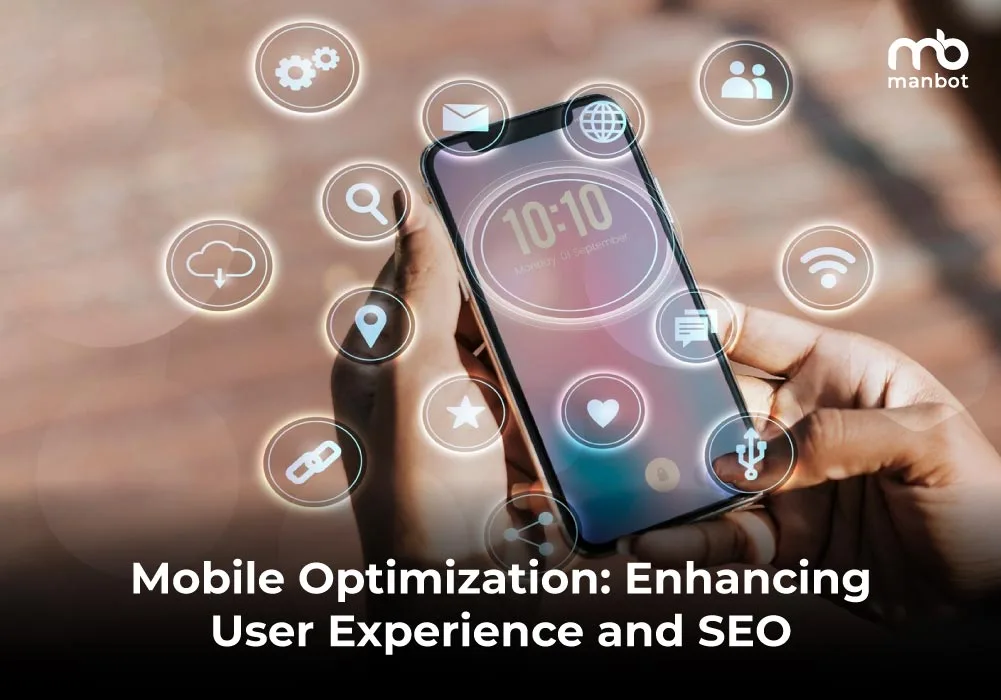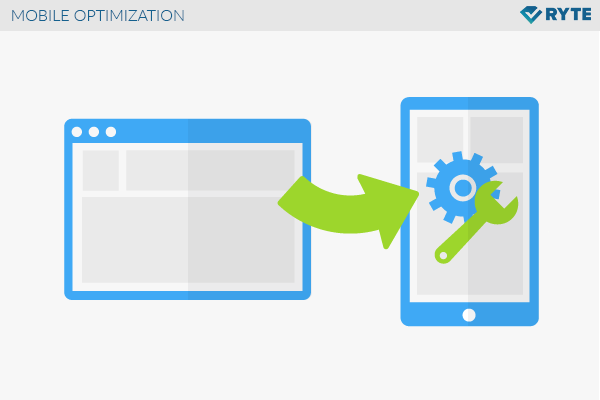Boost User Experience with Cutting-Edge Mobile Optimization
Boost User Experience with Cutting-Edge Mobile Optimization
Blog Article

The Ultimate Overview to Mobile Optimization: Strategies for Enhancing Web Site Performance on Smartphones and Tablets
The techniques for enhancing internet site performance on mobile platforms go beyond mere adaptation; they incorporate a comprehensive strategy that entails receptive design, speed optimization, material techniques, and customer experience improvements. By delving into the details of mobile optimization, businesses can not just satisfy customer assumptions yet additionally remain in advance in an affordable digital landscape.
Value of Mobile Optimization
Mobile optimization plays a critical role in boosting user experience and driving conversion prices in the ever-evolving electronic landscape. With the enhancing use mobile phones and tablet computers for browsing the web, guaranteeing that internet sites are maximized for smart phones has become crucial for services - Mobile Optimization. A mobile-optimized web site not just adjusts flawlessly to various screen dimensions yet likewise tons rapidly, providing users with a smooth and enjoyable browsing experience
In today's busy world, customers expect instant accessibility to info on the move. An internet site that is not maximized for mobile devices risks shedding possible customers as a result of reduce loading times or a bad interface. By buying mobile optimization, businesses can deal with the requirements of their mobile audience, bring about higher involvement and increased conversions.
Additionally, internet search engine like Google prioritize mobile-friendly web sites in their positions, making mobile optimization vital for enhancing visibility and drawing in natural web traffic. Mobile Optimization. Overall, the importance of mobile optimization can not be overemphasized, as it directly influences customer fulfillment, conversion prices, and total business success in the electronic world
Responsive Style Methods
Implementing responsive style strategies makes certain that internet sites dynamically readjust their format and material based on the user's device screen size, supplying a regular individual experience across numerous platforms. Among the most usual methods used in responsive style is producing fluid grids that allow material to resize proportionally to the screen size. This makes certain that aspects on the webpage preserve their family member spacing and arrangement, optimizing the seeing experience for users on various gadgets.
Furthermore, utilizing adaptable pictures that can scale with the dimension of the viewport aids protect against pictures from being cropped or misshaped on smaller sized displays. CSS media questions play a vital role in responsive design by allowing designers to use specific designs based upon the tool characteristics such as display width, elevation, and positioning. By leveraging media queries, web sites can adjust their design and style to fit smart devices, tablets, and desktop computer screens effortlessly.
Integrating receptive layout techniques not just improves customer experience but likewise contributes to enhanced search engine positions, as search engines like Google focus on mobile-friendly internet sites in their mobile search results page. By accepting receptive layout, internet sites can accommodate the varied requirements of users accessing material on a variety of tools, ultimately driving involvement and conversions.
Speed and Performance Optimization

One key strategy is maximizing photos and multimedia web content to minimize data sizes without jeopardizing high quality. Compressing pictures, leveraging modern image layouts like WebP, and lazy loading offscreen photos work techniques to quicken load times (Mobile Optimization). Moreover, minimizing HTTP demands, leveraging internet browser caching, and decreasing web server feedback times are vital action in improving performance.
Implementing a web content shipment network (CDN) can likewise significantly boost internet site rate by dispersing content throughout several servers internationally, minimizing latency for individuals accessing the site from different locations. Prioritizing critical above-the-fold web content Going Here and delaying non-essential scripts can additionally improve perceived efficiency. By focusing on rate and performance optimization, web sites can supply a smooth and satisfying user experience on smart phones.
Mobile-Friendly Content Methods
To optimize content for mobile devices, it is important to prioritize readability and interaction through critical formatting and concise messaging. Mobile-friendly material strategies include customizing the presentation of details to suit the smaller sized screens and on-the-go nature of smart device and tablet computer users. One vital aspect is to ensure that message is conveniently legible without the requirement for zooming in, using click for info font dimensions that are clear on mobile screens. In addition, separating web content into shorter paragraphs and making use of bullet factors can assist boost readability and make it less complicated for individuals to take in information swiftly.
Incorporating engaging visuals, such as photos and videos enhanced for mobile viewing, can likewise enhance the total customer experience. These visuals need to matter, top quality, and tons swiftly to avoid users from shedding passion. Furthermore, integrating interactive aspects like tests, polls, or surveys can increase customer involvement and motivate energetic engagement.
Individual Experience Enhancements
Building on the foundation of mobile-friendly content methods, enhancing user experience requires enhancing every touchpoint to ensure seamless communication and satisfaction for mobile customers. One important aspect of improving customer experience on smart phones is ensuring quickly filling times. Individuals expect sites to fill rapidly on their mobile phones and tablets, and any delays can result in frustration and boosted bounce rates. Implementing responsive design is an additional essential consider enhancing customer experience. Responsive design makes sure that web sites adapt to numerous display dimensions and resolutions, offering a consistent and easy to use experience across various gadgets.
Along with speed up and responsive style, streamlining navigating is important for a favorable individual experience. Clear and user-friendly navigation menus, popular search bars, and strategically positioned call-to-action buttons can help users easily discover what they are looking for on a mobile site. Maximizing forms for mobile users by decreasing the number of fields and utilizing auto-fill functions can additionally improve the overall user experience. By focusing on these customer experience enhancements, web sites can properly engage and retain mobile site visitors.
Verdict
To conclude, mobile optimization important link is critical for improving web site performance on mobile phones and tablet computers. By implementing receptive design methods, maximizing speed and efficiency, producing mobile-friendly material, and improving individual experience, companies can properly get to and involve with their mobile target market. It is essential for internet sites to adjust to the increasing mobile usage trends in order to remain competitive in the digital landscape.
Report this page